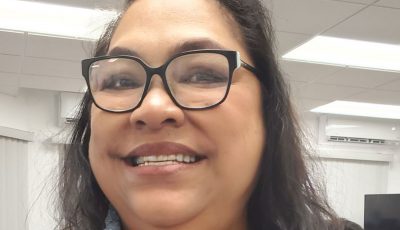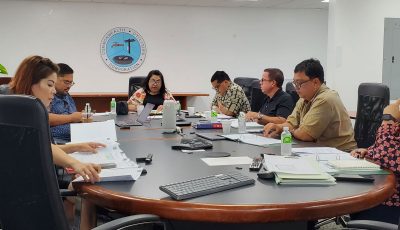PROBLEM IS IN THE PIPES:
‘RO system not the solution to Saipan water woes’
Contrary to recent recommendations made to the CNMI government and the Commonwealth Utilities Corp., the Bureau of Environmental and Coastal Quality believes that Saipan has enough water at its current source and a reverse osmosis water treatment plant is not the solution to the lack of 24-hour water service on the island.
In an interview, BECQ administrator Frank Rabauliman told Saipan Tribune that he doesn’t believe that building an RO system is the right solution to Saipan’s water problem.
“I don’t believe that the reverse osmosis is the right fix, right solution. Simply because, the issue about not enough water in the pipes, that’s very true, but there’s not enough water in the pipes because there are massive leaks all over the place,” Rabauliman said.
BECQ, with its divisions Coastal Resources Management and Environmental Quality, oversees CUC, along with the U.S. Environmental Protection Agency and the Commonwealth Public Utilities Commission.
Rabauliman stressed that Saipan has the source, and the current source, which is the aquifer underground, is enough.
“There is no data to tell us otherwise,” Rabauliman said.
“The source is not the problem, we have enough water supply. It’s really pumping in the water from the source, into the pipe, and losing 70 percent of that before it even gets into the…it wouldn’t matter if you put in five RO systems putting it on the same pipe if you will still lose 70 percent of it. It doesn’t make sense,” he added.
An RO system uses pressure and a semi-permeable membrane to filter or desalinate, demineralize or deionize water from a source, usually seawater, converting it to drinking water.
Fix the leaks
For Rabauliman, fixing the existing pipes first would be a more worthwhile endeavor.
“Even if you were to pump in more water through RO, you will just lose all that volume of water in those leaks so the right approach I believe is to address the leaks. And I believe the water task force during its time did a very robust approach on trying to identify these leaks. So, leaks and changing out of those meters, put in the meters that work,” Rabauliman said.
“If they fix that, I am a firm believer that we will address that issue of shortage of water,” he added.
Asked what if new pipes will be built along with the RO, Rabauliman said it is still better to focus on the pipes first.
“RO is not a cheap undertaking, so as changing all the pipes. I would think that you would want to change first the pipes if you have the funding for that, the capital,” Rabauliman said.
He added that CUC needs to fill the top positions in the corporation that has been vacant for some time now.
“All of those from my perspective are what’s happening in the front lines. It’s what CUC is supposed to be doing. What CUC needs is the support, CUC needs the executive director that has been vacant for the longest time. CUC needs to fill those positions so that those administrators, managers, can direct the folks in the front line in pursuing those illegal tapping, pursuing those leaks that siphoning out all the water out,” Rabauliman said.
The BECQ administrator said he is not sure if studies have been made regarding implementing an RO system on Saipan.
Rabauliman made BECQ’s opinions known to the administration especially after gathering that only some 30 percent of CUC’s produced water is “billable” or goes through the pipes to the customers while the “70 percent is going somewhere else.”
“I had to bring that up to the administration,” Rabauliman said.
“In fact I shared my thoughts with the administration that from BECQ’s perspective, we don’t believe that an RO is necessary but rather, we need to focus more on leak detection, and identifying those illegal tapping,” he added.
Talks of building an RO system has been in the buzz since CUC asked the administration to declare a water emergency on Saipan.
Earlier last month, in a meeting initiated by the Office of the Lieutenant Governor, businessman Robert Toelkes proposed establishing a public-to-public partnership agreement to build a $160-million RO water treatment plant.
In his presentation, Toelkes said that a six million gallon per day RO plant was the immediate solution to the water problem in Saipan.
The administration has earlier expressed their desire to build such a system on Saipan while CUC also views the project as the solution to the water woes of their old system.



























